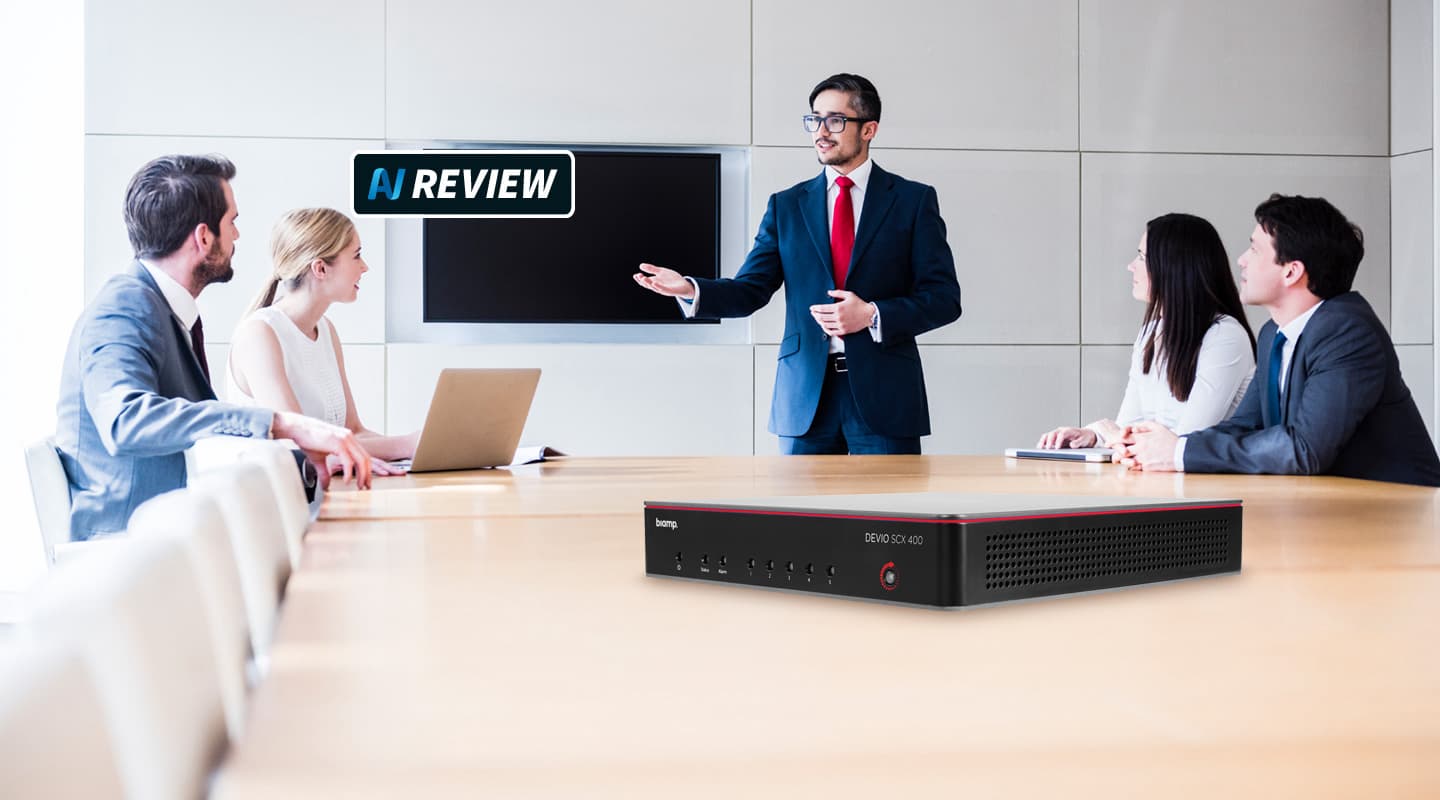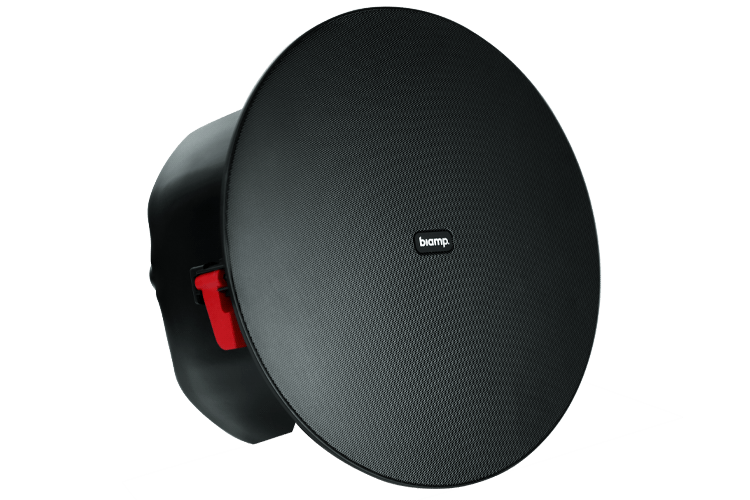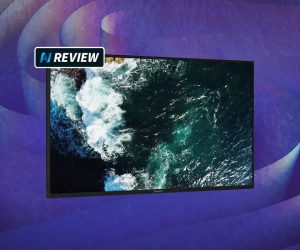
Review: Biamp Devio SCX
The promise of high quality VC audio and plug ’n’ play installation for medium to larger meeting rooms.
Review:/ Christopher Holder
In the rush to slice and dice our commercial meeting rooms into huddle spaces, some of the attention has been deviated from medium to large meeting rooms, which continue to be crucial.
That said, medium to large rooms, definitely don’t enjoy the same attention and blank-cheque budgets lavished on them, say, 10 years ago. System integrators are still required to blast through multiple meeting rooms with no time to spare.
Fortunately, VC audio is getting smarter and helping installers to keep up the frantic pace.
POINTY END DSP
Biamp has been at the pointy end of VC audio for many years. Its bag of DSP tricks to maximise speech intelligibility and auto mixing are highly prized and Biamp hardware takes pride of place in conference room AV cupboards and racks around the world.
That DSP continues to be fine tuned but more importantly, repackaged, to be scaleable across a variety of VC spaces. Biamp’s Devio range answers the small to mid sized meeting space challenge and has done so for a few years now. Now the Devio SCX range describes a number of different bundles of gear for larger VC spaces: up to eight mics and eight loudspeakers.
The Devio SCX demo kit I’ve been testing includes a Desono in-ceiling loudspeaker and a Parle tabletop mic as peripherals.
Everything links together via network cable — cat5 will do just fine — and is powered by PoE. Only the SCX400 DSP brain need mains power. This is one, key timesaver for installers. The other big timesaver is deployment:
Biamp Devio SCX
Audio Conferencing System
LAUNCH CODES
Once you’ve plumbed all your end points into the modules, it’s time to hit the Biamp Launch button on the SCX unit. Devio SCX will then identify and configure every device in the system and perform a minutes-long tuning cycle. Biamp Launch measures the acoustic characteristics of the room and then automatically applies signal processing, acoustic echo cancellation, as well as speaker and microphone tuning.
Biamp has a Windows app to dive deeper into system settings or there’s a web app, but the Launch button allows installers to bed down Devio into the room without recourse to a laptop or specialist programming, which is great.

Devio SCX 400
- (5 x) 1-Gigabit Ethernet Ports (4 PoE+ powered)
- SIP VoIP interface via Gigabit Ethernet connection
- Biamp Launch for one touch, automatic device discovery and tuning
- Onboard configuration web page

Desono C-IC6 Ceiling Speaker
- Low profile passive loudspeaker, less than 6 inches (155mm) total depth
- Supports both Cat cables and standard speaker wiring
- Designed to be integrated with the AMP-450BP (backpack PoE+ amplifier)
- 8-ohm nominal impedance allows for daisy chaining
- Bridge-mounted 1-inch soft dome tweeter
- 130° coverage optimised for low ceilings
- 60W with a peak power of 120W

Parlé TTM-X Tabletop
- Measures 4.7 inches (110mm) in diameter
- Beamtracking actively tracks & intelligently mixes conversations
- Four 90-degree zones for full 360-degree room coverage
- Network box which includes DSP for Beamtracking
- Uses only one channel of AEC per mic
- Single cable connection via CAT cable
- LED mute status indicator
PARLE VIEW
The Parlé tabletop mic is designed to be extremely low profile. It uses what Biamp calls Beamtracking technology to intelligently mix the sources around the table, with the Parlé mic featuring four 90-degree zones. It connects to a network box which takes care of the DSP including one channel of AEC per Parlé. It sounds clean and natural, especially once you’ve allowed Biamp to work its Launch magic on your room.
(It’s worth noting that there’s a Parlé low-profile ceiling mic that cleans up table clutter even further; is designed to cover around 5.5m from a 2.7m height; and, I’m told, is by far and away the more popular option in most rooms.)
The Desono C-IC6 in-ceiling speaker is part of a comprehensive Desono range that includes surfacemount, pendant and column speakers. There are subwoofers in the range as well.
The DC-IC6 is designed especially for conferencing. It’s optimised for speech, nonetheless it’s a gutsy 60W speaker and sounds great.
Best of all, the C-IC6 directly integrates with the Tesira four-channel ‘backpack’ PoE+ amplifier (which conveniently attaches to the back of one of the speakers in the installation) — which reduces wiring requirements and installation time. You can use traditional audio connections as well.
BIG ROOM SIMPLICITY
Devio SCX successfully treads the line between scalability and component options, with ease of installation and deployment.
The SCX400 with its formidable power makes most financial sense in medium to large spaces with at two or more Parlé mics and loudspeakers. The PoE, network cable connections and the genius of the Launch sequence ensures the exceptional Biamp audio DSP can be quickly up and working with minimal intervention from an integrator. Or in other words: Devio SCX guarantees great results without your senior engineers needing to be involved.
The Launch Sequence
The Launch button on the SCX unit allows the Devio system’s performance to be optimised to the space. Normally it’s something you’d do only once, but would repeat if the hardware configuration changes or some other aspect of the room changes. It’s a process that can be instigated without recourse to software but there are some tweaks and setting you can only do via the web UI or via Biamp’s SageVue management software.
First of all, ‘Launch’ checks the Biamp cattle on the park: what hardware is connected to the SCX. It then sweeps the room, using the Parlé mics as high quality omni test/measurement microphones. The impulse sweep tones allows SCX DSP to tune the system and then set the gain adjustments to ensure comfortable conference volumes. Sweeping the room also allows Devio to have an accurate sense of the dimensions and reverb time of the space which informs how the mic(s) perform and optimises the auto mic mixing and AEC characteristics.















RESPONSES